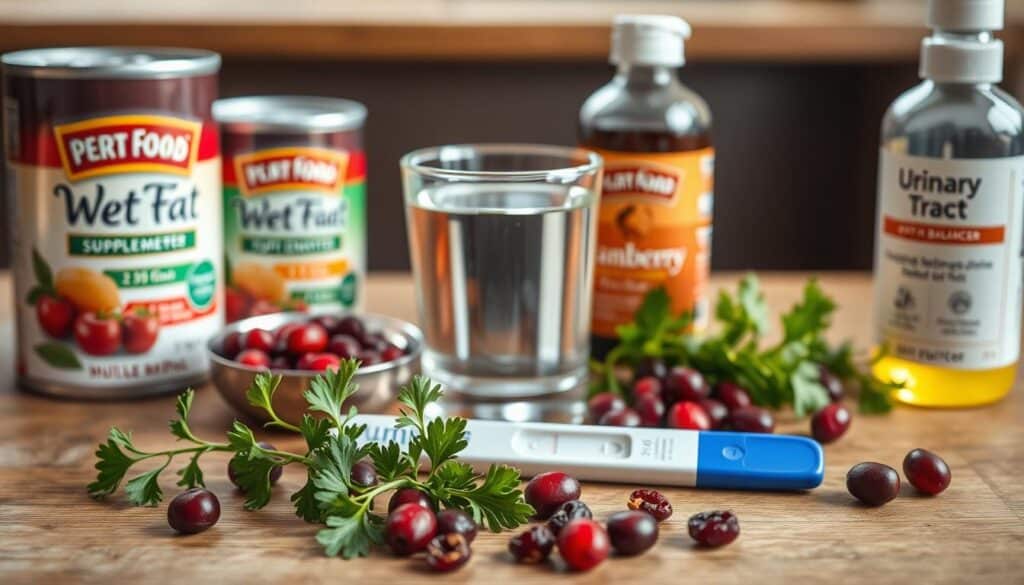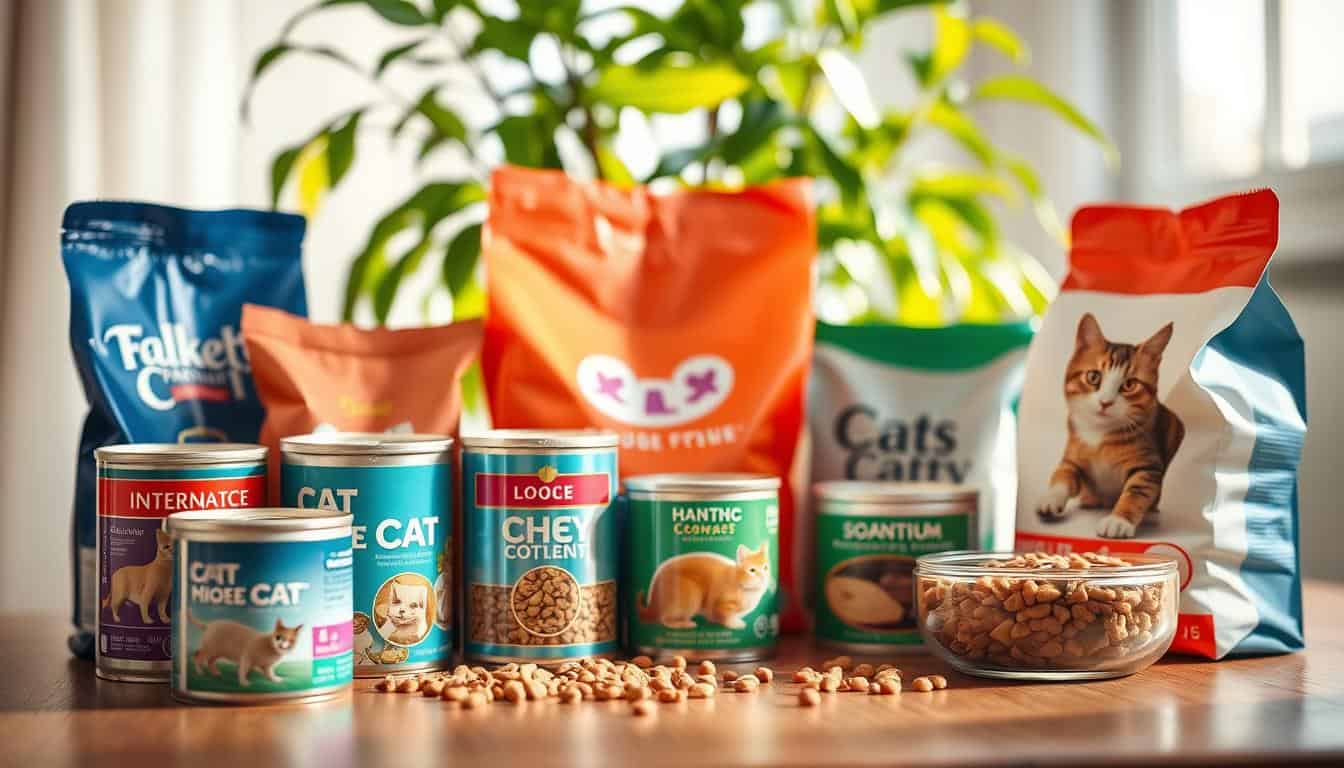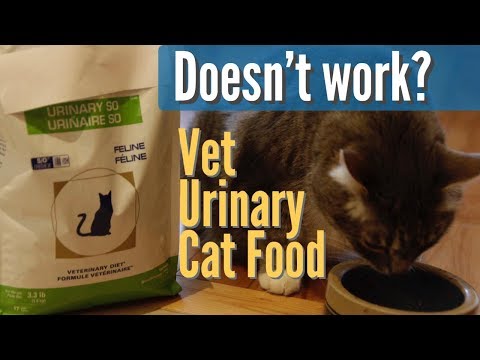Proper nutrition plays a vital role in a feline’s well-being. Many pet owners may not realize how deeply food choices impact their companion’s internal systems. The right meal plan can be a powerful tool for maintaining comfort and vitality.
This guide explores the critical link between what a pet eats and its urinary tract wellness. It offers actionable advice for selecting the best nourishment. Owners will learn how specific ingredients and moisture levels help prevent common issues.
Understanding this connection empowers people to make proactive choices. These decisions can significantly enhance a pet’s quality of life. The goal is to provide a clear path toward optimal support through informed feeding strategies.
Key Takeaways
- Nutrition is a cornerstone of feline urinary tract support.
- Specific ingredients in pet food can influence pH balance.
- Moisture content in meals is crucial for preventing crystal formation.
- Both prescription and over-the-counter options are available.
- Dietary changes work best when combined with proper hydration.
- Proactive nutritional choices can reduce the risk of discomfort.
- Evidence-based feeding strategies contribute to overall wellness.
Introduction: Why a Specialized Diet Matters for Cat Urinary Health
Specific nutritional strategies can directly address vulnerabilities inherent in a pet’s anatomy and lifestyle. These internal issues are among the most frequent reasons for veterinary visits.
Certain factors increase a pet’s susceptibility. Understanding these risks is the first step toward effective prevention.
Understanding Feline Urinary Challenges
Male pets have a narrower urethral passage. This anatomy means even minor blockages can become serious emergencies quickly.
Indoor companions face their own set of challenges. A lack of environmental stimulation and potential household stress can negatively affect their water consumption and internal function.
- Anatomical risks for males due to a narrower passage.
- Lifestyle factors for indoor pets, including boredom and stress.
- The prevalence of these conditions across the general pet population.
The Role of Nutrition in Enhancing Cat Comfort
What a pet eats plays a foundational role in internal wellness. Meal composition directly influences urine acidity and mineral concentration.
Specialized nourishment works by carefully managing these elements. The goal is to create an internal environment that discourages the formation of painful crystals.
This proactive approach through informed food choices is a powerful way to support comfort and longevity. It helps avoid the distress associated with common urological conditions.
Understanding Urinary Health in Cats
The urinary system is a complex part of a feline’s anatomy, prone to several distinct conditions. Problems can affect both the upper areas, like the kidneys, and the lower areas, including the bladder. Recognizing these differences is key to understanding potential urinary issues and supporting overall tract health.
Common Conditions and Symptoms
Feline Lower Urinary Tract Disease (FLUTD) is an umbrella term for various bladder and urethra ailments. These are among the most common reasons a pet needs veterinary attention.
Specific conditions under this category include painful bladder stones and life-threatening urethral blockages. Infections and Feline Idiopathic Cystitis (FIC), a stress-related inflammation, are also frequent.
- Straining or yowling during attempts to pass urine.
- Visible blood in the urine or urinating outside the litter box.
- Excessive licking of the genital area.
- A noticeable increase in thirst and urination frequency.
Impact on Overall Feline Well-Being
These internal problems cause more than just physical pain. They deeply affect a pet’s behavior and stress levels. A companion in discomfort may hide, lose its appetite, or become irritable.
Early detection of warning signs is critically important. Prompt intervention can prevent a minor issue from becoming a serious emergency. This protects the long-term well-being of our feline friends.
The Science Behind Urinary pH Balance and Diet
pH regulation represents a fundamental aspect of maintaining comfort in domestic pets. The ideal range for cat urine is slightly acidic, which naturally discourages mineral accumulation.
When urine becomes too alkaline, conditions favor struvite crystals development. These sharp structures can aggregate into painful stones requiring medical attention.
Conversely, overly acidic environments encourage calcium oxalate crystals formation. This type of problem often needs surgical intervention since it cannot dissolve through nutritional changes.
Specialized nourishment works by carefully controlling mineral content. Formulas restrict magnesium, phosphorus, and calcium levels that contribute to crystal formation.
The goal is maintaining that delicate slightly acidic balance. This approach prevents both types of crystals from developing in the system.
Understanding this chemistry helps owners appreciate why consistent feeding matters. Proper nourishment fundamentally shapes the internal environment for optimal well-being.
Key Ingredients That Support Urinary Tract Health

Modern pet nutrition focuses on targeted ingredients that address specific physiological needs. The right combination of components can create an optimal environment for internal wellness.
According to Dr. Danielle Bernal, global veterinarian with Wellness Natural Pet Food:
“Diets can vary in how they support urinary tract health, but it’s important to look for restricted amounts of minerals, such as magnesium and phosphorus, which can contribute to the development of urinary crystal and stone formation.”
Balanced Minerals and Controlled pH
Premium formulas achieve a delicate mineral balance. They provide essential nutrients without excess that could cause problems.
High-quality animal proteins naturally help maintain balanced urine pH. These proteins also supply essential amino acids that felines require.
Controlled sodium levels ensure proper function without stressing the system. This careful mineral management represents the cornerstone of effective nutritional support.
The Benefits of Antioxidant-Rich Additives
Cranberries contain natural compounds that prevent bacterial adhesion. This reduces infection risk and supports bladder comfort.
Omega-3 fatty acids from fish sources provide anti-inflammatory benefits. They can soothe irritated tissues and support immune function.
Vitamins C and E combat inflammation in the urinary tract. These antioxidant-rich ingredients work synergistically to promote overall wellness.
Exploring the Benefits of Wet vs Dry Cat Food
The evolutionary background of felines makes food format selection particularly important. These animals developed as desert predators, obtaining hydration from prey rather than drinking water.
This natural low thirst drive creates challenges for modern indoor companions. Their nourishment choices directly impact hydration status.
Enhanced Hydration from Wet Food
There’s a dramatic moisture difference between these two formats. Wet cat food contains 70-80% water, while dry food has only about 10%.
The extra hydration from wet food provides significant advantages. It dilutes urine concentration and promotes more frequent bladder flushing.
This increased water intake helps maintain optimal urine specific gravity. It creates an environment less favorable for crystal development.
Considerations for Dry Food Formulations
Dry food offers convenience and dental benefits that many owners appreciate. Special formulations attempt to compensate for lower moisture content.
These recipes carefully balance minerals to support internal comfort. However, they cannot fully replicate the hydration advantages of wet alternatives.
For pets who prefer kibble, ensuring abundant fresh water availability becomes essential. Adding water or broth to dry food can boost moisture consumption.
Many veterinarians recommend incorporating wet meals several times weekly. This approach leverages hydration benefits while maintaining practical feeding routines.
Product Roundup: Top Cat Foods for Urinary Health
A recent survey of nearly 300 households provides valuable insights into product performance. This real-world data complements clinical research to guide selection.
The marketplace divides into two main categories for supporting internal wellness. Each serves distinct needs based on condition severity.
Prescription Diets vs Over-the-Counter Options
Medical-grade formulas require veterinary authorization for specific conditions. They undergo rigorous testing for therapeutic effectiveness.
According to Dr. Danielle Bernal:
“Prescription diets are therapeutic nutritional recipes that support an acute or chronic medical condition. Other diets are targeted toward healthy pets, therefore do not require a prescription.”
Maintenance products offer preventative support without medical supervision. These focus on mineral balance and pH control for long-term wellness.
Choosing between these categories depends on individual needs. Veterinary guidance ensures the right match for each situation.
Premium options in both categories feature controlled mineral levels. They use quality ingredients to support urinary tract health effectively.
In-Depth Review: Hill’s Prescription Diet c/d Multicare
Developed through veterinary collaboration, Hill’s Prescription Diet c/d Multicare targets the root causes of urinary discomfort. This therapeutic formula represents a significant advancement in supporting urinary health.
The formula’s clinical effectiveness stands out. It can dissolve struvite crystals in as little as one week, with average results within four weeks. This rapid action often eliminates the need for surgical intervention.
Careful mineral management prevents both struvite crystals and calcium oxalate crystals from forming. The controlled levels of magnesium, phosphorus, and calcium create an environment hostile to crystal formation.
Omega-3 fatty acids provide anti-inflammatory benefits throughout the urinary tract. This helps soothe irritated tissues and supports overall comfort for the feline companion.
The food maintains ideal pH levels while providing complete nutrition. With 30% minimum crude protein, it supports muscle maintenance while addressing specific urinary health concerns.
Available in multiple flavors and textures, this prescription food offers flexibility for long-term feeding. However, the wet food comes only in small 2.9-ounce cans, which may be inconvenient for some households.
Veterinary authorization ensures proper use of this therapeutic cat food. Professional oversight guarantees optimal results for the cat experiencing urinary tract challenges.
In-Depth Review: Best Non-Prescription Alternatives
Many reputable brands now produce over-the-counter formulas specifically engineered to promote urinary tract comfort. These cat foods formulated for wellness provide accessible options without veterinary authorization.
Purina Pro Plan Focus Adult Urinary Tract Health Formula stands as a top choice. This wet option reduces pH levels and delivers 78% moisture content.
The carefully controlled magnesium level helps prevent mineral accumulation. Ocean whitefish provides palatable protein that appeals to finicky eaters.
AAFCO approval confirms this formula meets complete nutrition standards. It contains no artificial colors or preservatives, aligning with natural preferences.
Weruva Frisky Fishin’ Friends offers an alternative approach for preventative support. It features exceptionally high moisture content averaging 83%.
Real fish serves as primary ingredients rather than processed meals. The formula’s low phosphorus and magnesium levels naturally support maintenance.
These foods formulated for specific needs provide practical solutions. Veterinary consultation remains advisable for diagnosed conditions.
Both options represent quality commercial cat food choices. They support overall well-being through targeted nutritional approaches.
cat urinary health diet: Key Considerations for Selecting the Right Food
The decision-making process for optimal feline nourishment extends beyond basic nutrition to encompass lifestyle compatibility. Owners must evaluate their companion’s current condition, age, and weight when choosing sustenance.
Mineral management remains crucial for maintaining urinary health. Formulas with controlled levels of magnesium and phosphorus help prevent crystal development while supporting overall wellness.
Moisture content significantly impacts hydration status. Wet options typically offer superior fluid intake compared to dry alternatives, though some pets prefer combination feeding approaches.
Palatability cannot be overlooked, as even the most effective formula provides no benefits if refused. Flavor variety and texture options increase acceptance for long-term success.
AAFCO approval ensures complete nutrition without compromising therapeutic mineral balance. This certification guarantees the sustenance meets established standards for feline needs.
Consultation with veterinary professionals helps determine whether prescription-strength or over-the-counter formulas best address individual requirements. This guidance ensures appropriate selection for specific conditions.
Practical factors like price and availability influence sustainable long-term feeding plans. Gradual transition protocols over 7-10 days prevent digestive issues during dietary changes.
Regular monitoring of litter box habits and periodic veterinary testing confirms the chosen nourishment effectively supports tract health. Individual responses vary, requiring ongoing assessment.
Incorporating Treats and Supplements for Urinary Support
Beyond regular meals, targeted snacks can provide concentrated support for a pet’s internal wellness. These products contain functional ingredients that address specific needs.
Zesty Paws Cranberry Bladder Bites exemplify well-formulated options. They combine cranberry concentrate and D-mannose to help block bacteria from adhering to urinary tract walls.
D-mannose acts as a simple sugar that bacteria prefer to bind to instead of tissue. This allows harmful organisms to be flushed out naturally during elimination.
Additional components like L-arginine support kidney function in companions with specific deficiencies. Probiotics and vitamin B6 contribute to immune system strength.
| Supplement Type | Key Ingredients | Primary Benefit | Usage Consideration |
|---|---|---|---|
| Cranberry-Based Treats | Cranberry concentrate, D-mannose | Prevents bacterial adhesion | Follow feeding guidelines carefully |
| Amino Acid Supplements | L-arginine | Supports kidney function | Particularly beneficial for specific conditions |
| Probiotic Blends | Various beneficial bacteria | Enhances immune response | Complements overall wellness strategy |
These products offer accessible support without prescription requirements. Owners should account for treat calories in daily food portions to maintain healthy weight.
Consultation with veterinary professionals ensures supplement choices complement rather than contradict the primary nutritional plan. This approach maximizes benefits for feline companions.
Home Management Tips for Maintaining Feline Urinary Health
Owners can significantly influence their pet’s well-being through simple yet strategic environmental adjustments at home. These daily practices work alongside proper nutrition to create a holistic support system.
Focusing on two key areas—hydration and stress reduction—yields the greatest benefits. Consistent implementation helps maintain comfort and prevent issues.
Hydration Strategies and Innovative Feeding Tools
Encouraging ample water intake is the cornerstone of home care. Providing multiple sources of fresh water throughout the house makes drinking more convenient.
Many companions prefer moving water from fountains over still bowls. Choosing ceramic or stainless-steel containers also encourages drinking, as they stay cleaner.
Placing these stations in quiet areas, away from food, supports natural habits. This simple setup can dramatically increase daily fluid consumption.
Lifestyle Adjustments to Reduce Stress
A calm environment is vital for maintaining urinary comfort. Predictable routines and safe hiding spots help companions feel secure.
Interactive play and comfortable resting areas are excellent stress relievers. Using synthetic pheromone diffusers can also create a soothing atmosphere.
Observing litter box habits allows for early problem detection. Regular veterinary care, including check-ups, ensures any concerns are addressed promptly. These efforts help keep your cat content and comfortable.
Conclusion
Empowered pet guardians who understand the science behind urinary support can make transformative differences in their companions’ lives. The connection between nutrition and internal wellness is firmly established through clinical evidence.
Specialized formulations offer precise mineral control and pH balance. Both prescription and over-the-counter options provide valuable solutions for different needs. Wet food formats deliver superior hydration benefits for optimal tract function.
Home management strategies complement dietary approaches beautifully. Stress reduction and environmental enrichment work alongside proper nourishment. Regular veterinary oversight ensures these strategies remain effective.
This comprehensive approach represents the most powerful protection against discomfort. Informed owners can provide their feline friends with comfort and vitality for years to come.




